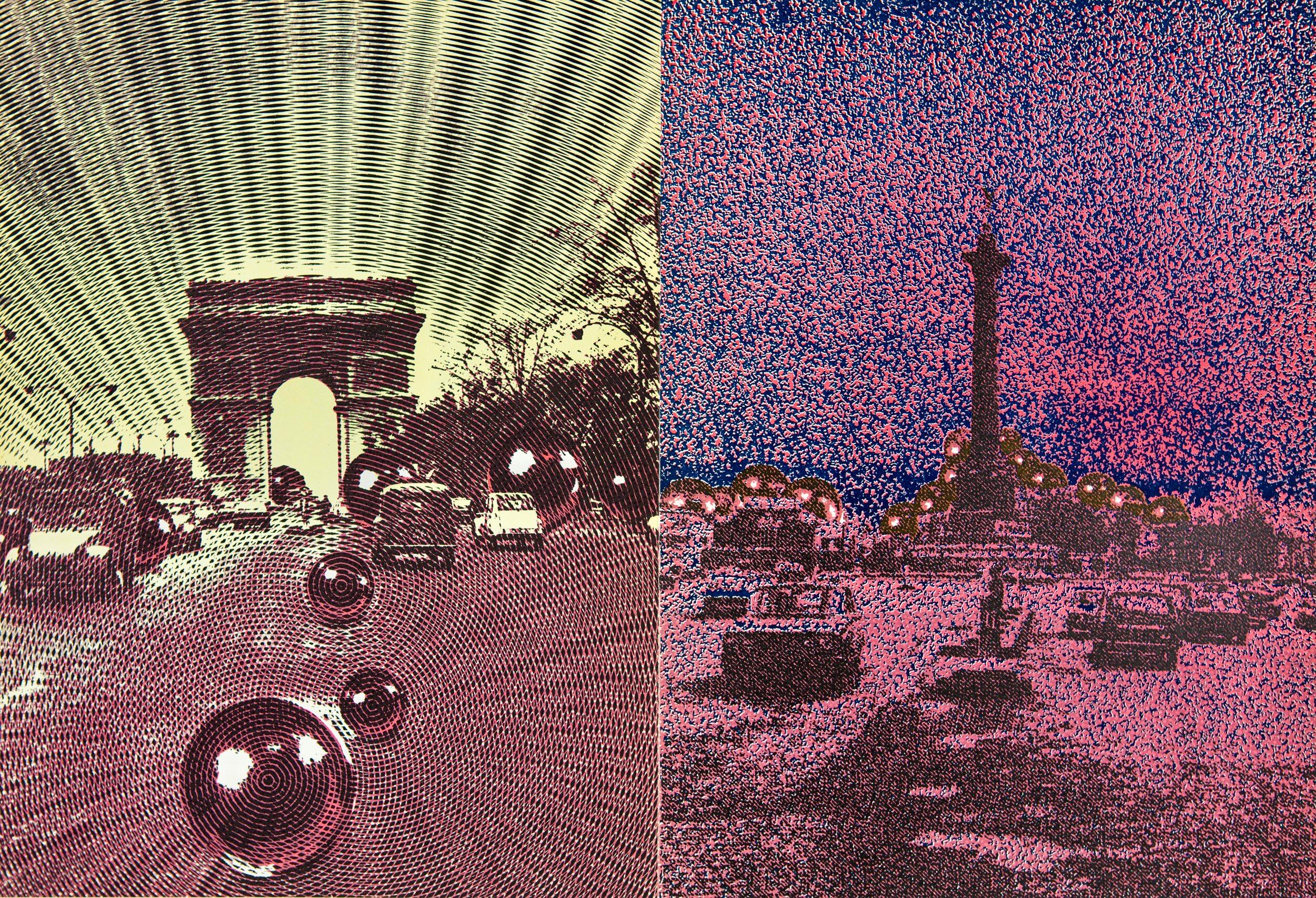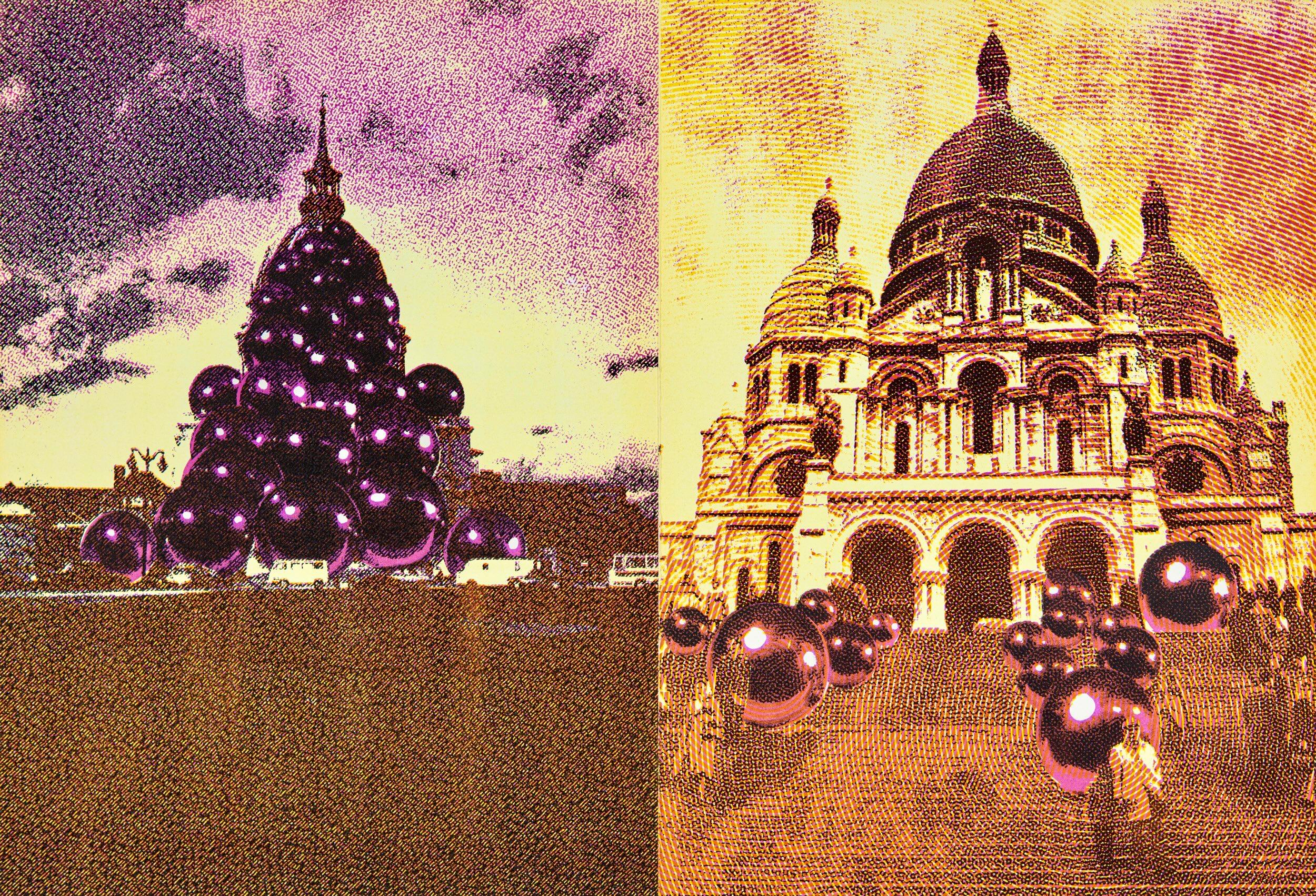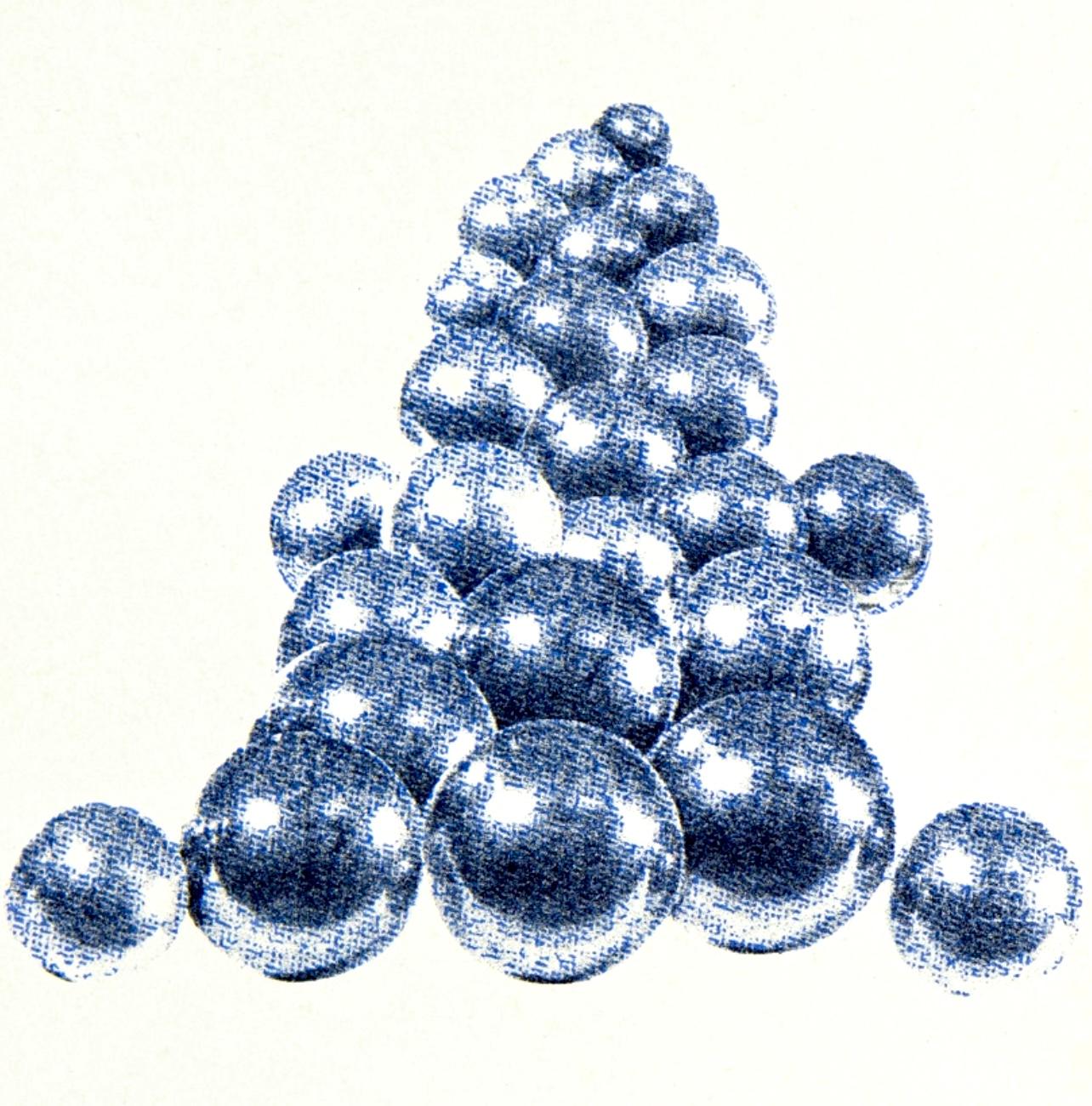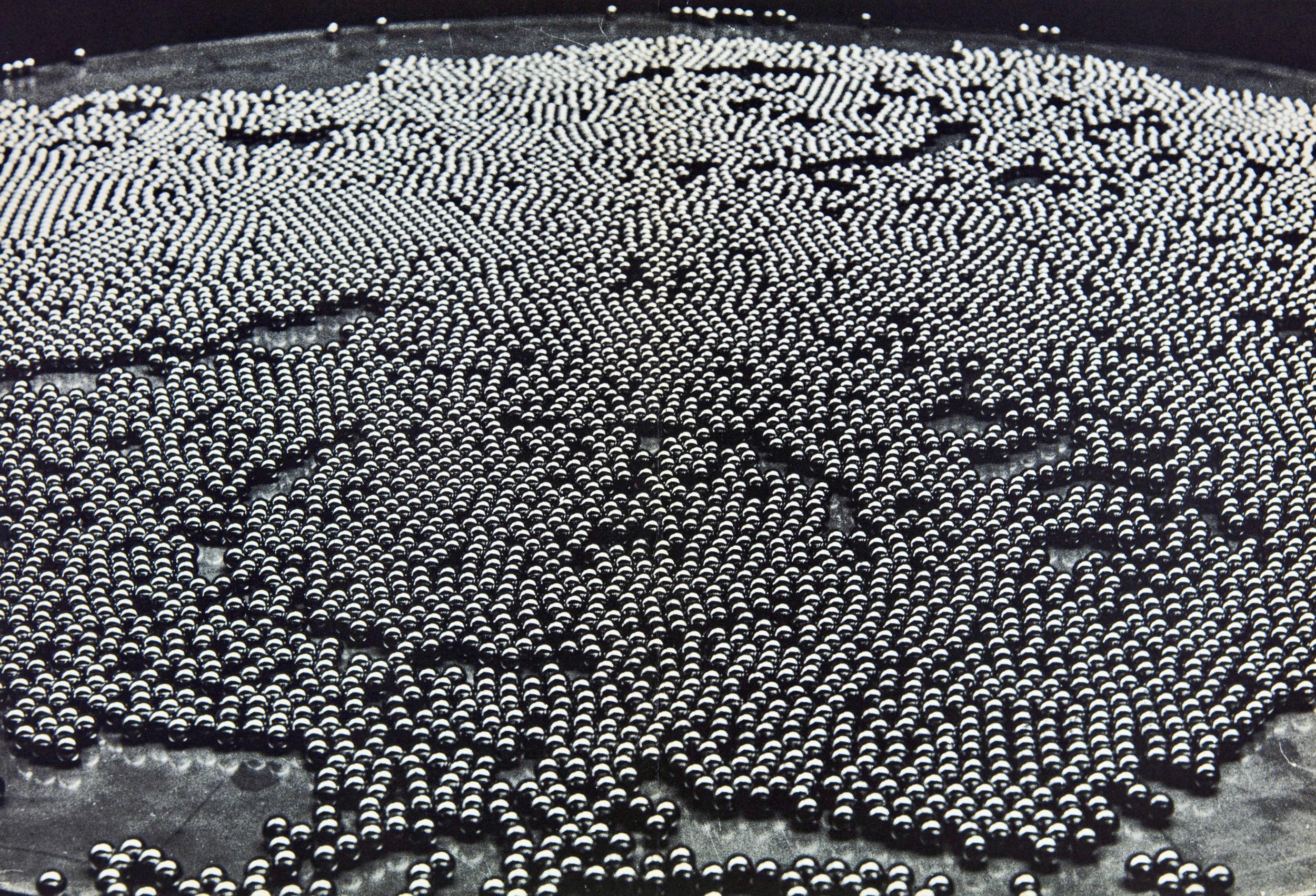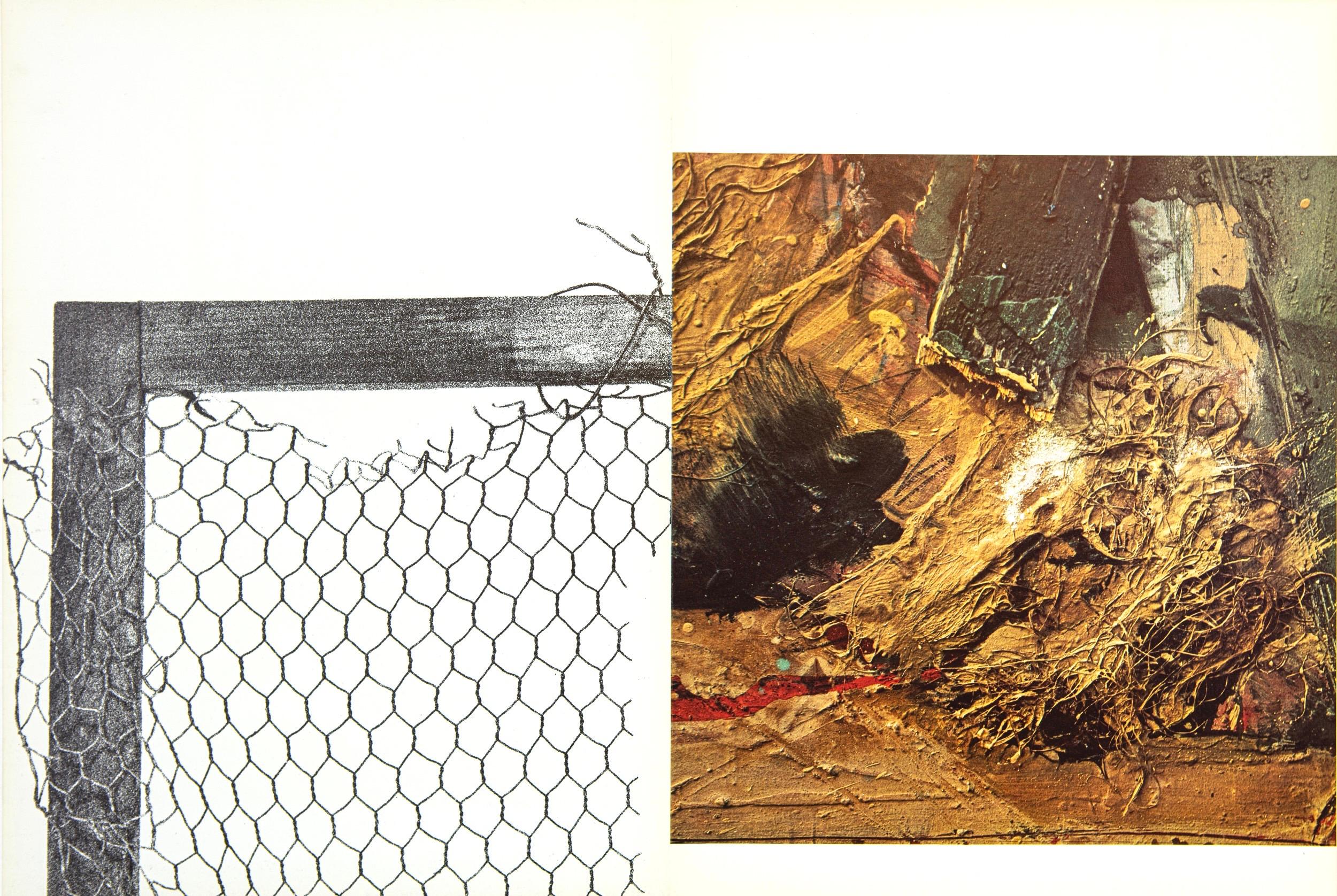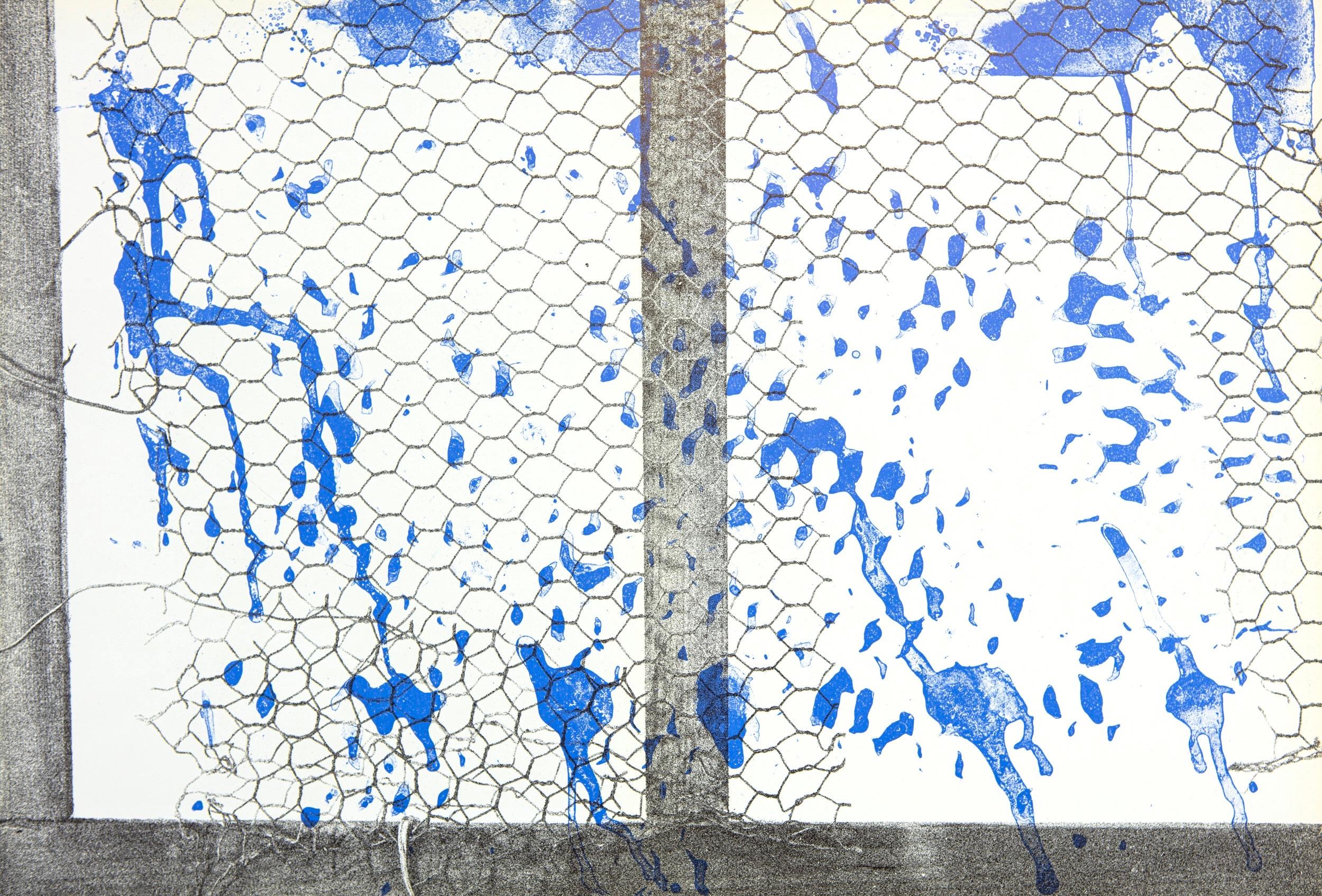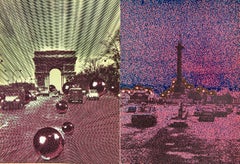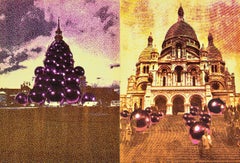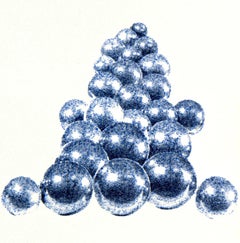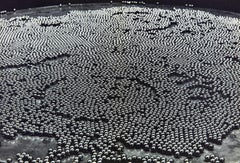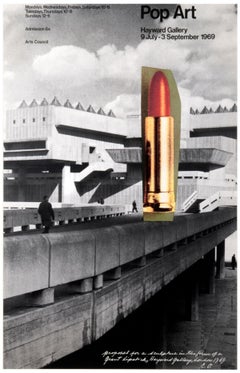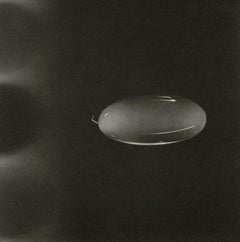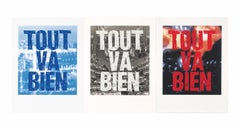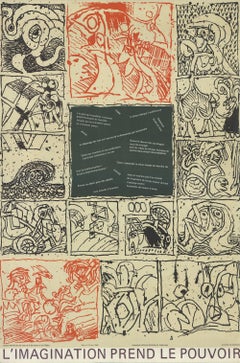Items Similar to Bury, Cinétisation, Derrière le miroir (after)
Want more images or videos?
Request additional images or videos from the seller
1 of 16
Bury, Cinétisation, Derrière le miroir (after)1971
1971
$716
$89520% Off
£548.87
£686.0820% Off
€628.22
€785.2820% Off
CA$1,022.78
CA$1,278.4720% Off
A$1,121.67
A$1,402.0920% Off
CHF 581.14
CHF 726.4220% Off
MX$13,477.76
MX$16,847.2020% Off
NOK 7,315.51
NOK 9,144.3820% Off
SEK 6,865.81
SEK 8,582.2620% Off
DKK 4,693.40
DKK 5,866.7520% Off
About the Item
Lithograph and cinétisation on vélin paper. Inscription: Unsigned and unnumbered, as issued. Good condition, with centerfold, as issued. Notes: From Derrière le miroir, N° 191, 1971. Published by Aimé Maeght, Éditeur, Paris; printed by Éditions Pierre à Feu, Galerie Maeght, Paris. Excerpted from the volume (translated from French), The illustrations in this issue of "Behind the Mirror" are cinétisations by Pol Bury, shot in the workshops of l'imprimerie Arte, Adrien Maeght. A luxury edition of 150 examples, numbered and signed by the artist was drawn with two cinétisations. Excerpted from a Christie’s, New York lot essay, The life span of Derrière le Miroir was thirty-five years. Publication began in 1946. Aimé Maeght, initiator of Derrière le Miroir, had already made few attempts to start publications illustrated with fine printed lithographs in colours in the years prior to the launch of Derrière le Miroir. The name, Derrière le Miroir was suggested by Jacques Kober, manager of Galerie Maeght. The gallery had opened in 1945; the first number of Derrière le Miroir was released a year later. For this first issue Geer van Velde was invited to create lithographs to illustrate the publication. The lithographs in the first issue was printed by Mourlot, Paris. The first three issues of Derrière le Miroir were unsuccessful for Maeght as far as the edition size—the initial print-runs were far too large. From 30,000 for the first issue, the number was taken down to 10,000 for numbers two and three, until Derrière le Miroir number four was published in an edition of 1500. Maeght instituted a policy whereby unsold issues were recycled and used for the fabrication of new paper for the coming editions—this served to both conserve resources and also usually result in ultimate edition sizes far less than 1,500. With number four, the permanent format for Derrière le Miroir was established. Lithographs in colours were key; text was limited to comments on the featuring artist's exhibition taking place in the Galerie Maeght, and this catalogue format was defining to Derrière le Miroir. Galerie Maeght took on the leading role in Paris and presented all main artists including Braque, Matisse, Chagall, Léger, Bonnard, Chillida and many more. So too did Derrière le Miroir. The idea of a magazine was meanwhile still on the mind of Aimé Maeght. He found an insert as a solution. Two, and later four, pages of art review were inserted from 1952 onwards. In 1968 this find had ripened to independency and the dream of Aimé Maeght was now a tangible fact named l'Art vivant. Derrière le Miroir was on it's own again. Over 250 issues in a row. At that point publisher Aimé Maeght wished to make a mark with the publication of an hommage to all who once contributed to the magazine which came in the form of issue number 250, but was delayed by the death of Aimé Maeght. It was published after number 253 in 1982 and became a tribute to Aimé and Marguérite Maeght and 35 years of friendship with artists and poets. The era of Derrière le Miroir was closed with that final publication.
POL BURY (1922–2005), as a young artist, born in Belgium and educated in France, Pol Bury met and was influenced by the Surrealist René Magritte. Bury was working as a painter at the time and began to participate in Surrealist group exhibitions. He abandoned painting in 1952, however, after encountering the work of sculptor Alexander Calder. Calder's mobiles, in particular, made a strong impression on Bury, who would go on to become one of the first practitioners of "kinetic" art in the 1960s. Bury emphasizes movement as an essential element of sculpture, stressing that his works are not complete until they are set into motion. His first kinetic pieces, from the 1950s, were weathervane-like sculptures that were activated by the viewer. In the later 60s, he began working in stainless and Cor-Ten steel, producing monumental balls that spun or rolled, columns that rotated, and planes that tilted, all operated by concealed electrical mechanisms. The movement that he assigned to these sculptures was often a slow, often imperceptible action that did not immediately register in the viewer's eye.
- Creation Year:1971
- Dimensions:Height: 15 in (38.1 cm)Width: 22 in (55.88 cm)
- Medium:
- Movement & Style:
- After:Pol Bury (1922 - 2005, Belgian)
- Period:
- Condition:
- Gallery Location:Southampton, NY
- Reference Number:1stDibs: LU1465215173032
About the Seller
4.9
Platinum Seller
Premium sellers with a 4.7+ rating and 24-hour response times
Established in 1978
1stDibs seller since 2021
1,200 sales on 1stDibs
Typical response time: <1 hour
- ShippingRetrieving quote...Shipping from: Southampton, NY
- Return Policy
Authenticity Guarantee
In the unlikely event there’s an issue with an item’s authenticity, contact us within 1 year for a full refund. DetailsMoney-Back Guarantee
If your item is not as described, is damaged in transit, or does not arrive, contact us within 7 days for a full refund. Details24-Hour Cancellation
You have a 24-hour grace period in which to reconsider your purchase, with no questions asked.Vetted Professional Sellers
Our world-class sellers must adhere to strict standards for service and quality, maintaining the integrity of our listings.Price-Match Guarantee
If you find that a seller listed the same item for a lower price elsewhere, we’ll match it.Trusted Global Delivery
Our best-in-class carrier network provides specialized shipping options worldwide, including custom delivery.More From This Seller
View AllBury, Cinétisation, Derrière le miroir (after)
By Pol Bury
Located in Southampton, NY
Lithograph and cinétisation on vélin paper. Inscription: Unsigned and unnumbered, as issued. Good condition, with centerfold, as issued. Notes: From Derrière le miroir, N° 191, 1971....
Category
1970s Pop Art Landscape Prints
Materials
Lithograph
Bury, Cinétisation, Derrière le miroir (after)
By Pol Bury
Located in Southampton, NY
Lithograph and cinétisation on vélin paper. Inscription: Unsigned and unnumbered, as issued. Good condition, with centerfold, as issued. Notes: From Derrière le miroir, N° 191, 1971....
Category
1970s Pop Art Landscape Prints
Materials
Lithograph
Bury, Cinétisation, Derrière le miroir (after)
By Pol Bury
Located in Southampton, NY
Lithograph and cinétisation on vélin paper. Inscription: Unsigned and unnumbered, as issued. Good condition. Notes: From Derrière le miroir, N° 191, 1971. Published by Aimé Maeght, É...
Category
1970s Pop Art Landscape Prints
Materials
Lithograph
Bury, Cinétisation, Derrière le miroir (after)
By Pol Bury
Located in Southampton, NY
Lithograph and cinétisation on vélin paper. Inscription: Unsigned and unnumbered, as issued. Good condition, with centerfold, as issued. Notes: From Derrière le miroir, N° 191, 1971....
Category
1970s Pop Art Landscape Prints
Materials
Lithograph
Rebeyrolle, Composition, Derrière le miroir (after)
By Paul Rebeyrolle
Located in Southampton, NY
Lithograph on vélin paper. Inscription: Unsigned and unnumbered, as issued. Good condition, with centerfold, as issued. Notes: From Derrière le miroir, N° 202, 1973. Published by Aim...
Category
1970s Pop Art Landscape Prints
Materials
Lithograph
Rebeyrolle, Composition, Derrière le miroir (after)
By Paul Rebeyrolle
Located in Southampton, NY
Lithograph on vélin paper. Inscription: Unsigned and unnumbered, as issued. Good condition, with centerfold, as issued. Notes: From Derrière le miroir, N° 202, 1973. Published by Aim...
Category
1970s Pop Art Landscape Prints
Materials
Lithograph
You May Also Like
Pop Art
By Claes Oldenburg
Located in London, GB
Offset lithograph and screenprint in colours, 1969, from the edition of 700, printed by G & B Arts Ltd., London, published by Arts Council of Great Britain for the Hayward Gallery, L...
Category
1960s Pop Art More Prints
Materials
Lithograph, Screen
Une Fois Rien (Once Again / No Action)
By Christine Ravaux
Located in New Orleans, LA
Christine Ravaux created Une Fois Rien which is signed by pencil. This impression is #12 of 30
Shades of blacks and grays on a fallen branch create a pleasing pattern contrasted wi...
Category
Early 2000s Modern Landscape Prints
Materials
Mezzotint
$120 Sale Price
40% Off
Tu Va Bien
Located in Pine Plains, NY
From his series "Sentences", Muntadas addresses through his works social, political and communications issues, the relationship between public and private space within social framewo...
Category
Early 2000s Conceptual Landscape Prints
Materials
Archival Pigment
1968 'L'imagination Prend Le Pouvoir'
By Pierre Alechinsky
Located in Brooklyn, NY
This rare original poster by Pierre Alechinsky is a powerful artistic and historical document from the May 1968 Paris student protests. Printed on billboard paper using a home press,...
Category
1960s Contemporary Prints and Multiples
Materials
Offset
$560 Sale Price
20% Off
Rauschenberg-Quote Vintage Pop Art
By (After) Robert Rauschenberg
Located in Brooklyn, NY
Rare exhibition poster from the series Collection of European Masters, published for the Kunstsammlung Nordrhein-Westfalen by Achenbach Editions.
Quote from 1981 explores themes of c...
Category
Late 20th Century Pop Art Figurative Prints
Materials
Offset
$60 Sale Price
20% Off
Hommage à San Lazzaro
By Max Bill
Located in OPOLE, PL
Max Bill (1908-1994) - Hommage à San Lazzaro
Lithograph from 1975.
Edition 371/575 (Photocopy of the colophone is included).
Dimensions of work: 31 x 24 cm.
Each copy of this lit...
Category
1970s Modern More Prints
Materials
Lithograph
More Ways To Browse
Provincetown Woodcuts
Retro Aspen Ski Posters
Revolutionary War Art
Richard Giglio
Ronald Stephen Riddick
Roy Lichtenstein Moonscape
Roy Lichtenstein Sandwich And Soda
Roy Lichtenstein Water Lily
Salvador Dali Normandy
Scott Kahn Painting
Thomas Nason
Vail Vintage Ski Poster
Vail Vintage Ski Posters
Vintage Breckenridge Posters
Vintage Map Los Angeles
Vintage Posters Palm Trees
Vintage Ski Poster Aspen
William Wilkins
